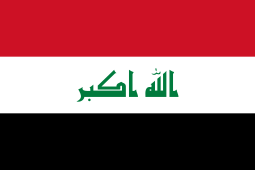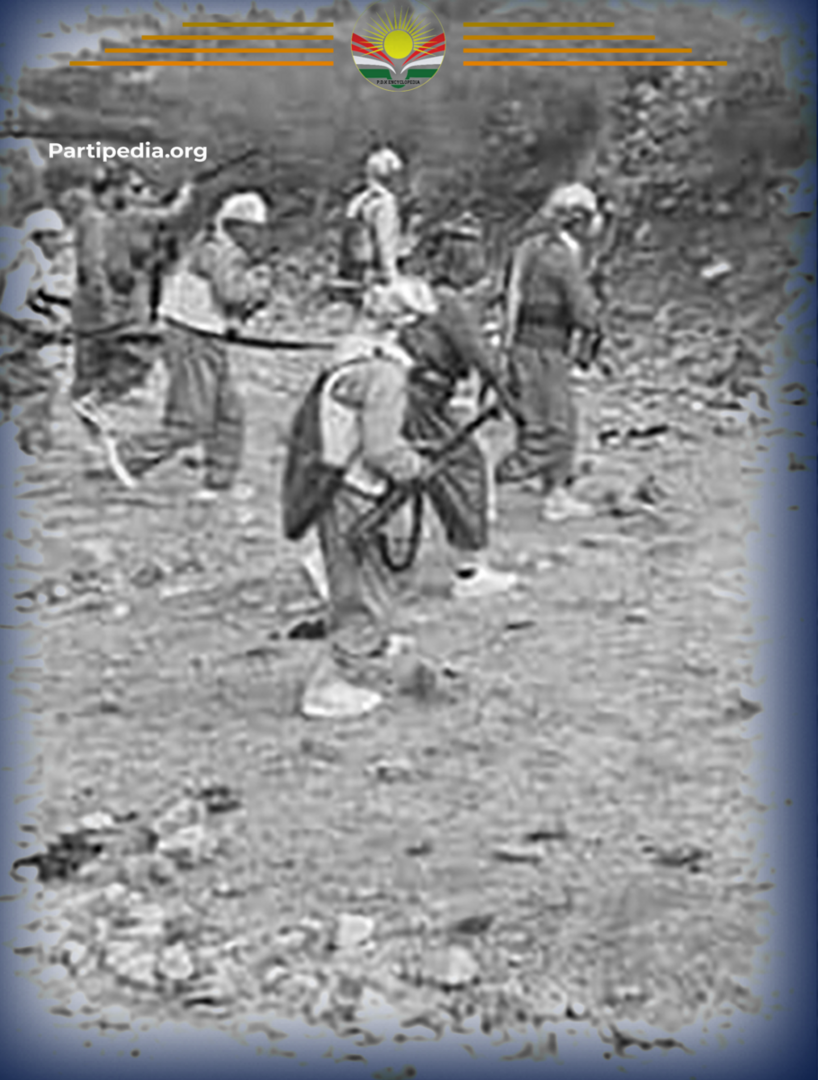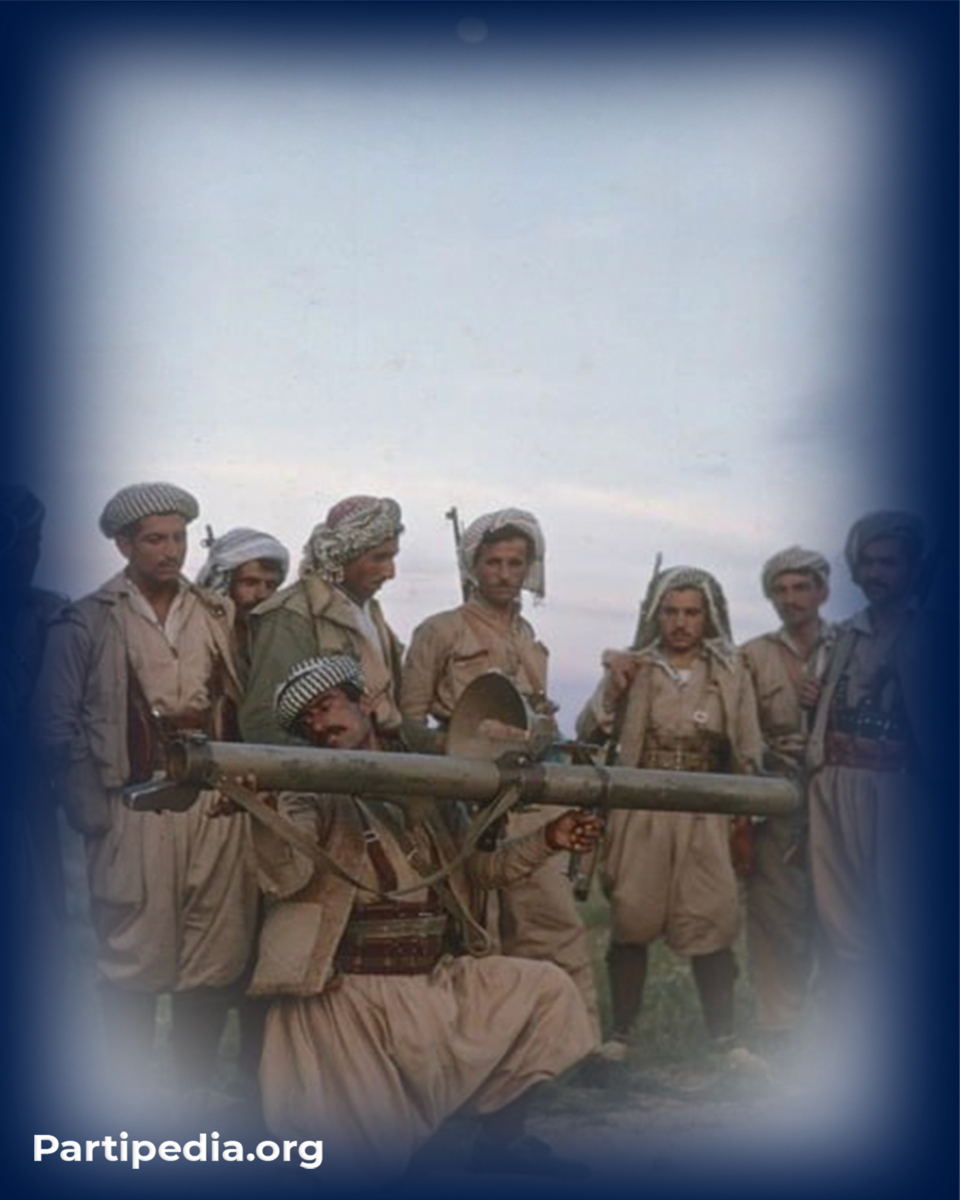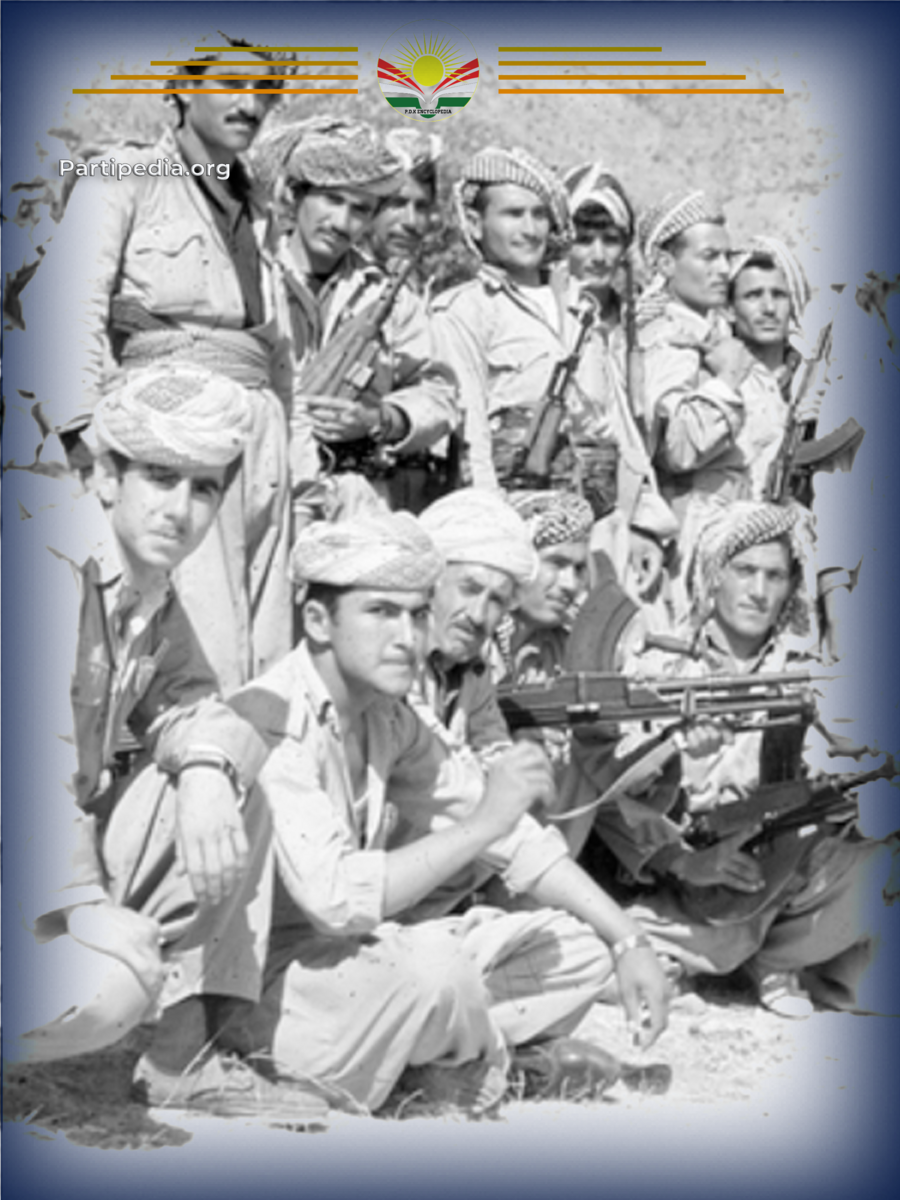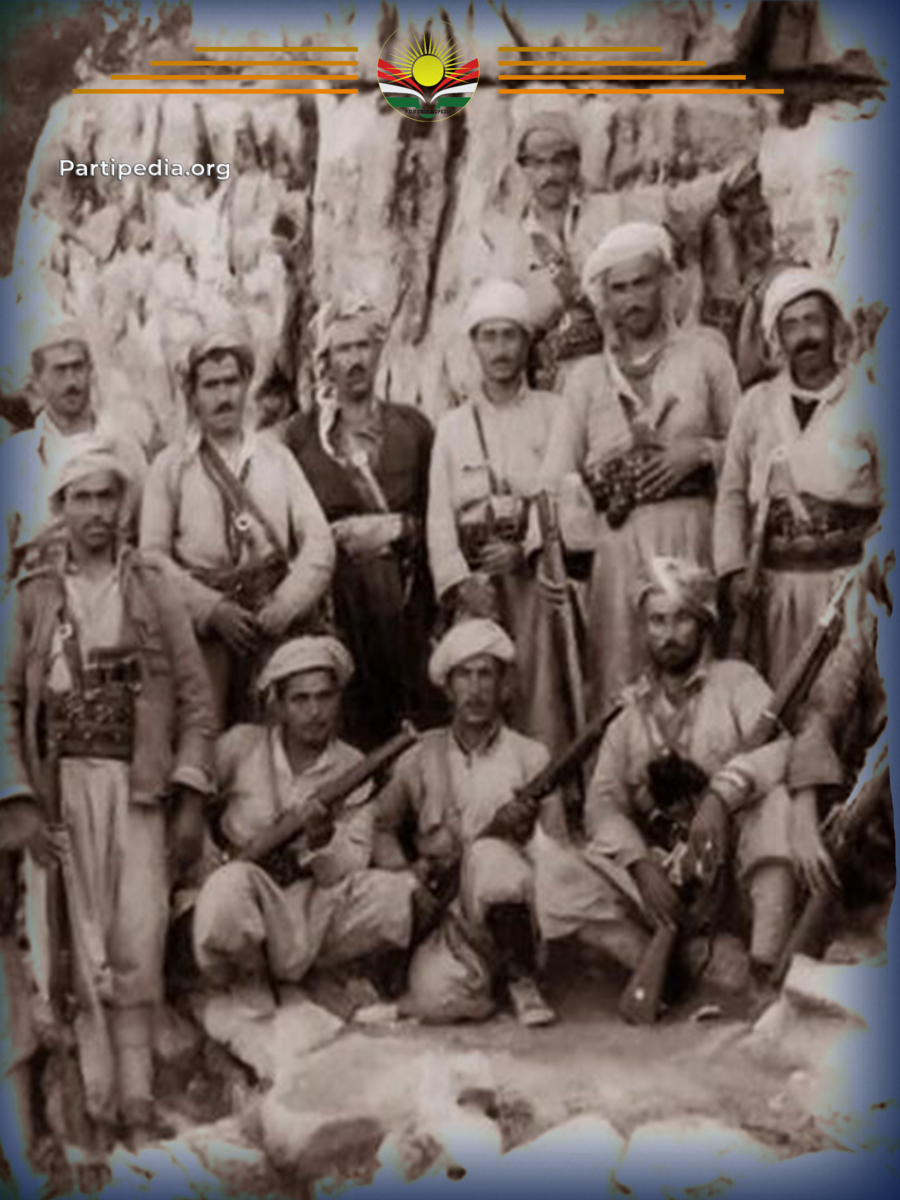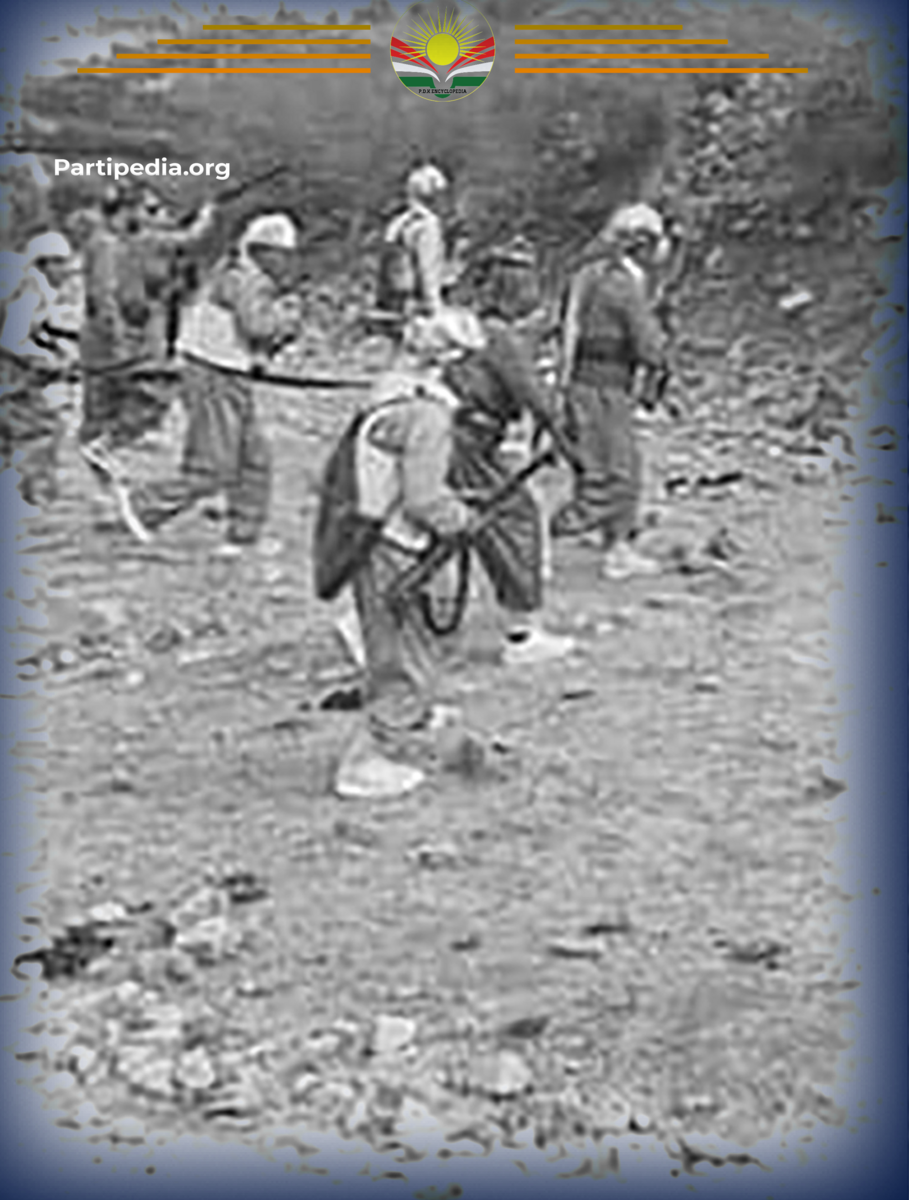The relationship between the revolution and the Iraqi government during the Ba'ath regime, when it came to power for the second time, was going through a special situation. Especially from late 1968 to late 1969 because the old Political Bureau group had defected from the revolution and had connections with the government their forces alongside the Iraqi army forces had intensified their attacks on the areas under the control of the revolution and were advancing to some extent in the Jafayati Valley, Siwayl, Sharbazher, Srochek, Halabja, Biyara, Tawelah, Dukan, Betwen, Pishder and Ranya.
The government forces had suffered heavy casualties in the attacks by the Peshmerga forces in Surdash, so they attacked places in Jasana, Ganjina and Qamchugha every day to bring them back under their control, but their efforts were in vain. After all the defeats of the army against the Peshmerga, Hardan Tikrit visited Kurdistan with the first and second divisions and drew up a comprehensive plan of attack on the revolutionary areas in Sulaimani. On October 25, 1969, government forces, supported by tanks, artillery, armored vehicles, warplanes and a large number of mercenaries (jash) attacked the areas of Qaladze, Assos Mountain, Marga, Kewarash, Shahidan Valley, Znira and Azmar Mountain. A long bloody battle was fought over a wide geographical area. Only in the Qaladze area were the seventh, fourteenth and twentieth brigades involved, along with a regiment and several Commando (Maghawir) battalions.
Although the Iraqi army was able to reach Qaladze after 14 days of Peshmerga’s deffence and efforts against them, they suffered heavy losses, especially in the Martyrs Valley, where the fighting continued for several months, and in Mount Makok, the government forces suffered a major defeat. In Surdash area, the Iraqi army launched several consecutive attacks on the Peshmerga positions in Qzler, Qal Qala, Jasana, Ganjina, Qamchugha and Sara Mountain, but all the attacks were defeated and suffered heavy damage, despite all these the forces of old political bureau wing did not stop from attacking and coordinated with Iraqi army forces against the Peshmerga and areas under the control of the revolution.
In mid-November 1969, as part of the general offensive of the government forces, a large force of the group advanced from the vicinity of Lake Dukan to attack the Peshmerga forces and their leadership headquarters in Surdash Mountain towards the village of Bargalo. A Peshmerga force led by Haji Sheikh Qadir, head of the battalion of the Rizgari (Salvation) Forces, rose up against them and stopped them. They confronted them in such a way that they did not give up until they defeated them. They left the bodies of 13 fighters on the battlefield and the rest of their force fled to the army barracks in Dukan.
This shows the fact that the wing of the old Political Bureau continued to intimidate (Fight) the Eylul (September) Revolution with the help and support of the Ba'ath regime. This was a plan and test of the new Ba'ath regime to understand how far the group could win against the Kurdistan revolution and fulfill their dreams of disrupting the revolution. But their efforts were unsuccessful and fruitless.
Sources:
١- ئیبراهیم جەلال، باشورى کوردستان و شۆڕشى ئەیلوول بنیادنان و هەڵتەکاندن ١٩٦١- ١٩٧٥، چاپی چوارەم، ٢٠٢١.
١- مسعود بارزانی، بارزانی و بزوتنەوەى ڕزگاریخوازی کورد، بەرگی سێیەم، بەشی دووەم، شۆڕسی ئەیلوول ١٩٦١-١٩٧٥، چاپى یەکەم، عێراق - ٢٠٠٤.
٣- ئارى کەریم، چەند لاپەڕەیەکى زیندوو لە شۆڕشى ئەیلوولدا، چاپخانەى خەبات، دهۆک - ١٩٩٩.
٤- خۆشەوى عەلى کانیەلنجى، بیرەوەریەکانى عەزیز قازى حەمەد سورچى، چاپخانەى دانیشفەر، هەولێر- ٢٠٢٣.
٥- هاوکار کەریم حەمە شەریف، شۆڕشی ئەیلوول، چاپخانەى زانکۆى سەلاحەدین، چاپى یەکەم، هەولێر- ٢٠١٢.

